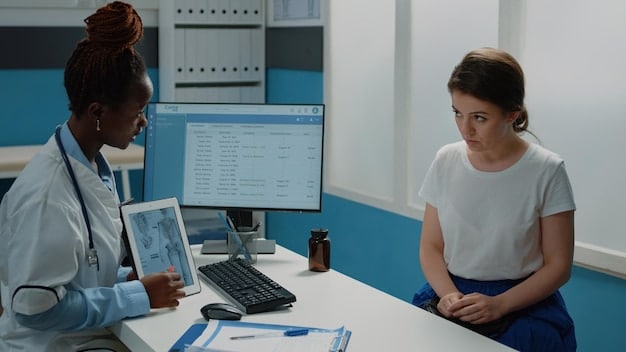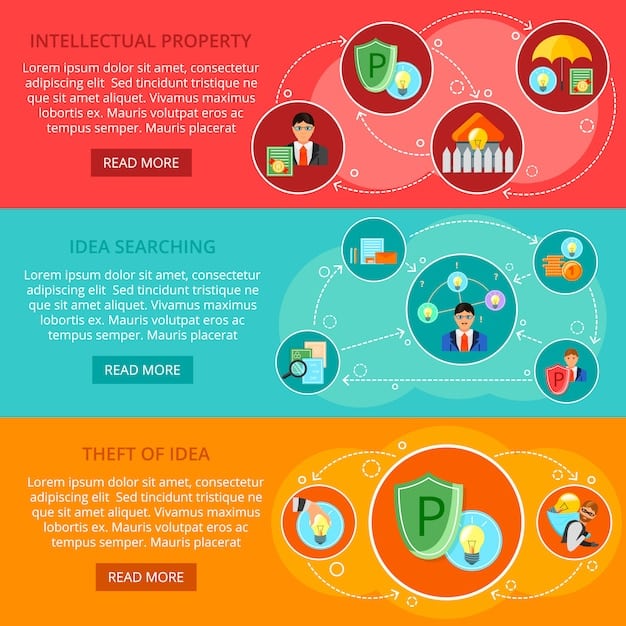Social Security Disability Benefits: Eligibility and Application 2025

Social Security Disability Benefits provide financial aid to those unable to work due to a disability; understanding the 2025 eligibility requirements and application process is crucial for individuals seeking this support.
Navigating the process of applying for Social Security Disability Benefits: Understanding Eligibility and Application Process for 2025 can seem daunting. This article aims to simplify the requirements and steps involved so you can better understand.
Social Security Disability Benefits: An Overview
Social Security Disability Insurance (SSDI) and Supplemental Security Income (SSI) are two programs managed by the Social Security Administration (SSA) that provide assistance to individuals with disabilities. These programs offer a financial safety net for those who can’t work due to a medical condition.
Understanding the basics of these programs is crucial before diving into eligibility requirements and the application process. SSDI is funded through payroll taxes, while SSI is a needs-based program funded by general tax revenues.
SSDI vs. SSI: Key Differences
SSDI is designed for individuals who have worked and paid Social Security taxes. SSI, on the other hand, is for those with limited income and resources, regardless of their work history.
- SSDI: Requires a work history and contributions to Social Security through payroll taxes.
- SSI: A needs-based program for individuals with limited income and resources.
- Medical Requirements: Both programs require applicants to have a qualifying disability.
- Financial Considerations: SSDI benefits are not based on income, while SSI benefits are.
These differences are important to consider when determining which program is the right fit for your situation.
In summary, the Social Security Disability Benefits offer critical support. To start, it’s important to know what’s required of you.
Eligibility for Social Security Disability Benefits in 2025
To qualify for Social Security Disability Benefits in 2025, applicants must meet specific medical and non-medical criteria. These criteria ensure that benefits are provided to individuals who genuinely need them due to their disability.
Understanding these eligibility requirements is the first step in determining whether you are likely to qualify for SSDI or SSI.

Medical Eligibility
The SSA uses a strict definition of “disability.” You must have a medically determinable physical or mental impairment that prevents you from engaging in any substantial gainful activity (SGA). This condition must have lasted, or be expected to last, for at least 12 months or result in death.
The SSA maintains a Listing of Impairments (also known as the “Blue Book”) that outlines specific medical criteria for various conditions. If your condition meets or equals a listing, you may automatically qualify for benefits.
- Medical Evidence: Detailed medical records, including doctor’s reports, test results, and treatment history.
- Severity of Impairment: The impairment must significantly limit your ability to perform basic work-related activities.
- Duration of Impairment: The condition must have lasted, or be expected to last, for at least 12 months.
Medical eligibility is a key component of the application process, and thorough documentation is essential.
Non-Medical Eligibility
In addition to medical requirements, applicants must also meet certain non-medical criteria related to age, work history, and income/assets.
These criteria vary depending on whether you are applying for SSDI or SSI.
In conclusion, understanding both medical and non-medical requirements is fundamental for your application.
The Application Process: A Step-by-Step Guide
The application process for Social Security Disability Benefits can be complex and time-consuming. However, breaking it down into manageable steps can make it less overwhelming.
Following this guide will help you navigate the application process more efficiently.
Gathering Necessary Documents
Before you begin the application, gather all necessary documents and information. This will streamline the process and prevent delays.
- Social Security Number: For yourself and any family members.
- Birth Certificate: To verify your age.
- Medical Records: Including doctor’s reports, test results, and treatment history.
- Work History: Dates of employment, job titles, and earnings.
Having these documents readily available will save you time and effort during the application process.
Submitting Your Application
You can apply for Social Security Disability Benefits online, by phone, or in person at a local Social Security office. The online application is often the most convenient option.
The application will ask for detailed information about your medical condition, work history, and daily activities.
The next step is completing and submitting the application accurately and completely.
Understanding the Evaluation Process
After you submit your application, the SSA will evaluate your claim to determine whether you meet the eligibility requirements. This involves several steps and may take several months to complete.
Knowing what to expect during the evaluation process can help you better prepare and manage your expectations.
Initial Review
The SSA will first review your application to ensure that you meet the basic non-medical eligibility requirements. If you do, your case will be sent to Disability Determination Services (DDS) for medical evaluation.
Medical Evaluation
DDS will review your medical records and may request additional information from your doctors or other healthcare providers. They may also schedule you for a consultative examination (CE) with a doctor chosen by the SSA.

Decision
Based on the medical and non-medical evidence, DDS will make a determination on your claim. If your claim is approved, you will begin receiving benefits after a waiting period. If your claim is denied, you have the right to appeal the decision.
The evaluation process also includes potential appeals if your application isn’t approved initially.
Appealing a Denied Claim
If your application for Social Security Disability Benefits is denied, you have the right to appeal the decision. It is important to act quickly, as there are strict deadlines for filing an appeal.
Understanding the appeals process can help you navigate this challenging situation and increase your chances of a favorable outcome.
Levels of Appeal
There are four levels of appeal within the SSA: reconsideration, hearing by an administrative law judge (ALJ), Appeals Council review, and federal court review.
- Reconsideration: An independent review of your case by someone who did not participate in the initial decision.
- Hearing by an ALJ: A hearing before an administrative law judge who will review the evidence and hear testimony from you and any witnesses.
- Appeals Council Review: A review of the ALJ’s decision by the Appeals Council.
- Federal Court Review: A lawsuit filed in federal court if you disagree with the Appeals Council’s decision.
Each level of appeal offers an opportunity to present new evidence and argue your case.
The appeal process is sequential, and you must exhaust each level before moving on to the next.
Tips for a Successful Application
Applying for Social Security Disability Benefits can be a challenging process, but there are steps you can take to increase your chances of approval. Preparation is key.
Taking these steps can improve your application and save you time in the long run.
Seek Medical Treatment
Regular medical treatment is essential for documenting your medical condition and demonstrating the severity of your impairment. Make sure to follow your doctor’s recommendations and attend all scheduled appointments.
Provide Detailed Information
Be as detailed and specific as possible when describing your medical condition, work history, and daily activities on the application. The more information you provide, the better the SSA can understand your situation.
Seek Legal Assistance
Consider seeking assistance from a qualified disability attorney or advocate. They can help you navigate the application process, gather necessary documents, and represent you at hearings.
With the right plan, you can better your chances of having your application approved.
| Key Aspect | Brief Description |
|---|---|
| 📝 Eligibility Criteria | Meeting medical and non-medical guidelines to qualify for benefits. |
| 📄 Application Process | Step-by-step guide involving documentation and submission. |
| ⚖️ Evaluation Process | Review by SSA, including medical and non-medical assessments. |
| appeals | Options for appealing a denied claim, including reconsideration and hearings. |
Retirement and Social Security Benefits
What is the definition of disability used by the Social Security Administration?
Social Security Definition of Disability Defined – NOSSCR
What is Substantial Gainful Activity (SGA)?
Substantial Gainful Activity | SSA
Frequently Asked Questions (FAQ)
▼
SSDI is for those who have worked and paid Social Security taxes. SSI is a needs-based program for individuals with limited income and resources, regardless of their work history.
▼
A qualifying disability is a medically determinable physical or mental impairment that prevents you from engaging in any substantial gainful activity (SGA) and is expected to last at least 12 months or result in death.
▼
It depends. If your earnings exceed the Substantial Gainful Activity (SGA) level, you generally will not be eligible for SSDI. SSI has different income limits that may allow for some part-time work.
▼
The processing time can vary. It often takes several months to receive a decision. Appeals can extend the process, potentially taking several years to resolve.
▼
If your application is denied, you have the right to appeal the decision. You can request a reconsideration, followed by a hearing with an administrative law judge, and further appeals if necessary.
Conclusion
Understanding the Social Security Disability Benefits, including eligibility and the application process for 2025, will help you be prepared for the process of applying for disability benefits. Getting approved for social security can provide a financial safety net.





